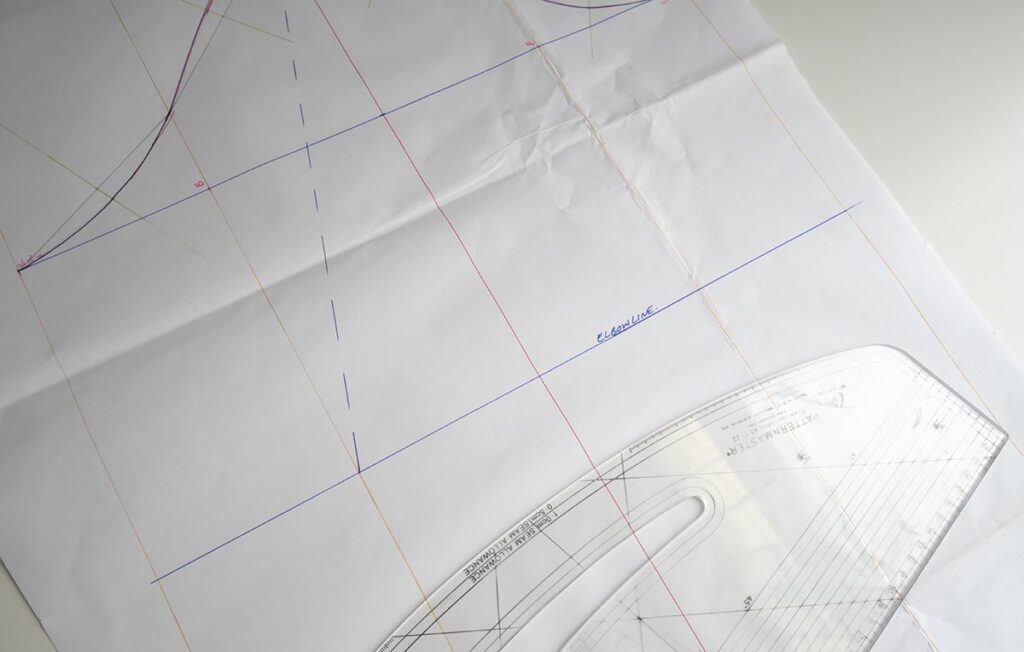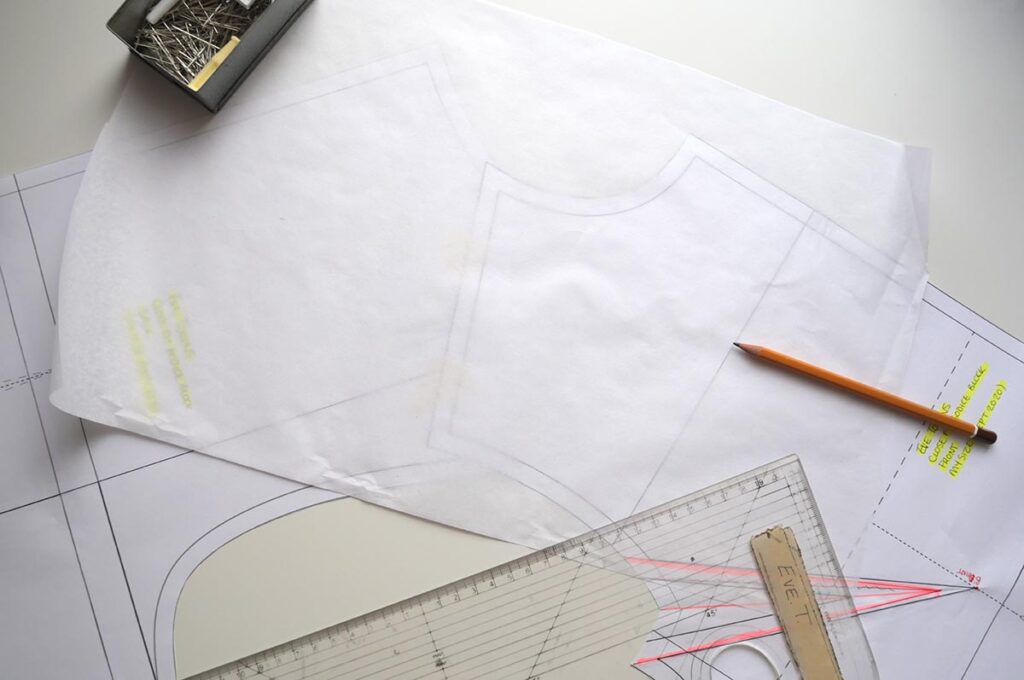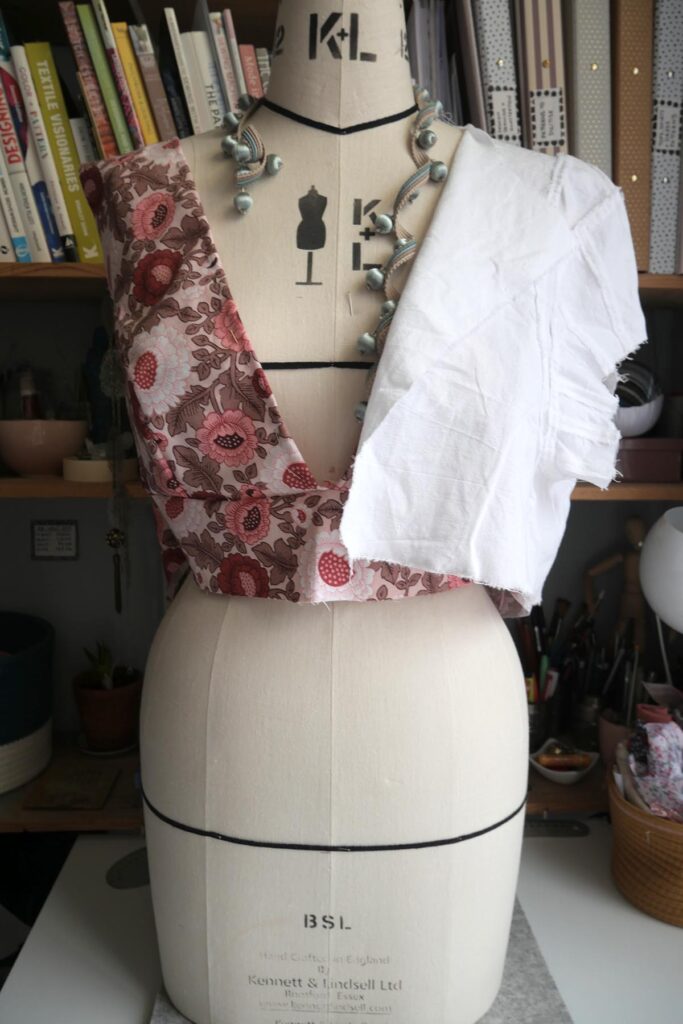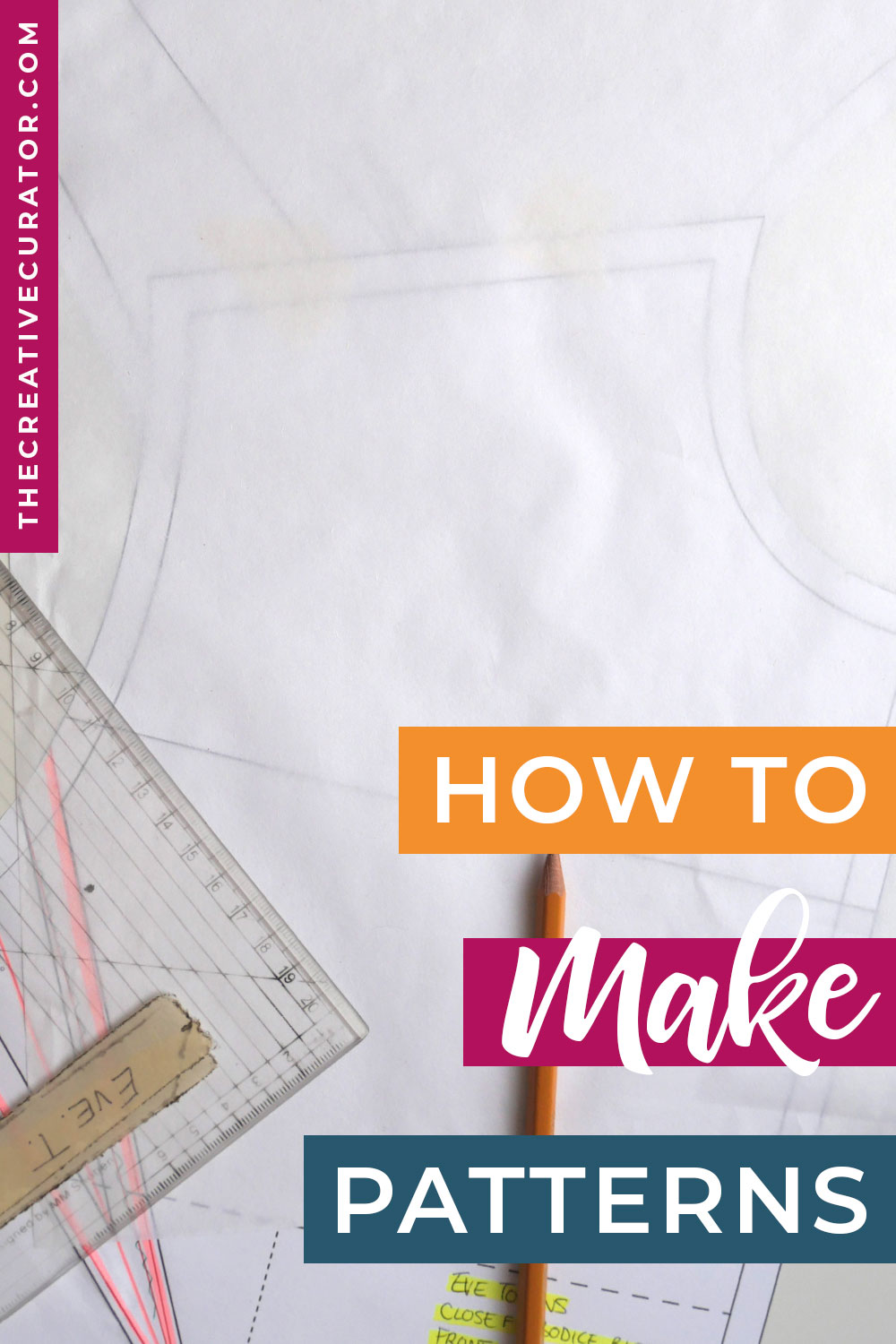How To Make Patterns: Pattern Making, Pattern Drafting And Draping
If you have been sewing for a while you may now be ready to start learning how to make patterns, and this is where the fun really starts!
I should know – after discovering fashion when I lived in NYC in 2001, I studied pattern cutting and fashion design at degree level so that I could spend as much time as possible making clothing patterns!
But what are the different ways to make patterns, and do you need to know them all? Let’s dig in on the ways that you can make your own clothing patterns!
As well as written explanations below, I’ve also included a YouTube video of mine where I explain more about the differences between pattern making, pattern drafting, draping and contouring, and further below that you’ll find links to all the different pattern making tutorials I have created for you to learn more!
Some of the links in this article are affiliate links. This means that I may receive a fee at no extra cost to you if you purchase a recommended product.
Pattern Making Questions
Let’s start with some frequently asked questions about clothing patterns and pattern making!
What Is A Pattern?
The word pattern is not as most non-sewing people imagine, who think of a pattern as being something that is repeated in some way. A pattern when it comes to sewing and pattern making is fact a blueprint of sorts for clothing. Sewing patterns come in physical paper format or as a digital file which is then printed on paper.
What Is Pattern Making?
Pattern making, also known in the US as apparel patternmaking, is the term used to create clothing and sewing patterns. Using blocks and slopers as a starting point, patterns are developed into a range of styles using various techniques.
What Is Garment Pattern Making?
Garment pattern making is the making of patterns specific to clothing. This could be dresses, skirts, shirts, jackets or pants. If it is worn, it is a garment, and so counts as garment (or apparel) pattern making.
What Does A Pattern Maker Do?
A pattern maker – or a pattern cutter – is a skilled person, who interprets drawings from designers to create a clothing pattern. This will then be sewn by the pattern maker if working as part of a small team or by a machinist as part of a larger team.
Pattern makers are creative. They take any 2D drawing and interpret it to be a 3D garment, something a lot of fashion designer struggle with!
Why Is Pattern Making Important?
Pattern making is an important skill as it helps move fashion innovation forward. The fashion industry is one of the most exploitative industries in the world, and pattern makers play an important role in helping to find ways to combat waste and to develop new sustainable cutting techniques.
What Are The Types Of Pattern Making?
When it comes to making patterns, there are several methods of that can be used:
- Pattern drafting
- Flat cutting
- Draping
- Contouring
Let’s dig into the different ways to make sewing patterns!
Pattern Drafting
Pattern drafting is the technique used to create basic blocks using specific body measurements. This first draft of a basic block (often referred to as a sloper in other parts of the world) includes wearing ease, but no design ease, seam allowance to garment details.
It is the more complex method and yet it is also the most comprehensive way to learn how to make your own patterns. Once you have drafted a pattern, you really start to understand how sewing patterns are created.

Using your body measurements you can draft many blocks to use as starting points for clothing patterns:
- Bodice block
- Sleeve block
- Skirt block
- Dress block
- Trouser block
Once these basic slopers are drafted, you can learn how to use dart manipulation techniques when flat cutting to develop your block and slopers into proper sewing patterns for yourself!
Flat Cutting
Flat cutting is the technique of taking a block or sloper, and developing in on the flat into a sewing pattern style! You could start with a basic block or sloper you have drafted yourself or a commercial sewing pattern that you have used and like, and decide to develop into further designs for yourself.

The opposite of draping with is the three dimensional method, flat cutting is a great way to be creative with your patterns – and is how fashion designers and pattern makers create sewing patterns for the collections!
Draping
Draping (as mentioned above) is a 3D technique of making patterns. By placing fabric directly on the human body of dress form, it is possible to create a garment with different fabrics to achieve different effects, by manipulating the fabric into position.
Draping differs from pattern making because it is a more creative three dimensional form of creating patterns. The advantage of draping is that you can work with the body and any irregularities in shape or form in a more organic way, while patternmaking requires measurements and modifications to the pattern.
Draping is one of my favourite ways to make sewing patterns! It is impossible to drape on yourself though, so having a dress stand or mannequin is essential.
Playing with fabric on a mannequin and seeing a design develop in fabric form is really exciting and a great way to understand how the different lumps and bumps of our body parts can affect the way fabric falls and drapes. You can drape sewing patterns using knit fabrics, woven fabrics, non-grain materials and even a combination of them all!

If you do not have a mannequin, there are online tutorials showing you how to create a ‘duplicate’ of yourself using an old tee and duct tape. I’ve never tried this.
I invested many years ago in a dress stand while at fashion school, and though m’Lady’s sizing is very unlike mine, I do have great fun with experimental draping on her. If you’d like to invest in a more affordable version, Beatrice Forms is a new company in the US that makes custom body forms. They’re not cheap at over $1000 but if your body is ‘fixed in size’, could be a great long term investment!
You can learn more about the best dress forms for women who sew here and the best male dress forms too.
Contouring
Contouring is similar to draping, except the fabric you drape with is fitted close to the body, so no actual draping occurs. Contouring is a technique used for lingerie, corsets, swimwear pattern development and structured support for evening gowns.
I love contouring, and have an entire module in my online course Drape & Contour for Beginners dedicated to it.
Garment Deconstruction To Re-Make Patterns
The final way to make pattern is to use ‘garment deconstruction’ which is a favourite amongst people who have been sewing for a while, but have no interest in learning how to draft patterns from scratch. It’s an easy technique to start with allowing them to ‘clone’ their existing clothes into patterns.
The very basic version of this method does not even include deconstructing a garment, but instead requires you to lay it out flat to trace the garment sections using a tracing wheel and pencil. It’s a simple way to copy existing clothes into new patterns.

For the full deconstruction method though, I would recommend that you analyse the garment and then unpick it, in the reverse order that it was sewn. This way you will better understand the construction methods used too!
Ideally you start with copying woven garments first as these are easier to deconstruct, and then move on to copying you knit clothes!
If you’ve never done this process to make a sewing pattern, do check out my friend Claire-Louise Hardy’s latest book Clone Your Clothes – it’s perfect for those who just want to recreate existing clothes in there wardrobes!
Can I Learn How To Make Patterns?
Absolutely! Learning how to make patterns is one of the most fun – and rewarding – parts of learning pattern making!
To have a pattern that fits you, and can be used again and again, is just one of several reasons for why people start learning. The skill of pattern drafting, flat pattern making or draping are not as hard as people think. It is a skill that can be learnt slowly!
Taking the time to learn how to make your own patterns is a two way win. Not only will you have a new skill to use in creating new and unique patterns for yourself and others, but you’ll also have a better understanding of the way your body is formed.
The different curves and lines, and how some changes can be made to commercial sewing patterns based on your newfound knowledge.
Creating a pattern that you love, that fits perfectly and that can be used again and again, will fill you with joy. No more store bought clothing that fits badly. You’re now on your way to being in control of what you wear, and how you look in those clothes!
I made a video below discussing the difference between the different pattern making techniques – you might find it helps!
What IS Pattern Making (vs Pattern Drafting vs Draping vs Contouring)?
And of course if you want to learn more about making your own patterns, I have a page of pattern drafting tutorials covering:
- Female bodice block
- Basic sleeve block
- Simple skirt block
Oh, and there are all my pattern making tutorials too!







How to learn through videos
I have some pattern making tutorials on my YouTube channel already – you can check it out here https://www.youtube.com/channel/UCPNDYhxNeRlE013Cj0S_GXQ – and I am making many MANY more this year, so if there’s something specific you’d like to see, let me know Nisha!. Otherwise I do have paid courses coming out as well that cover pattern making and draping.